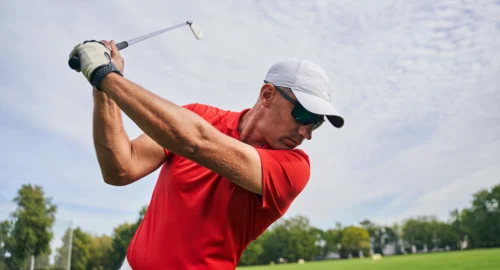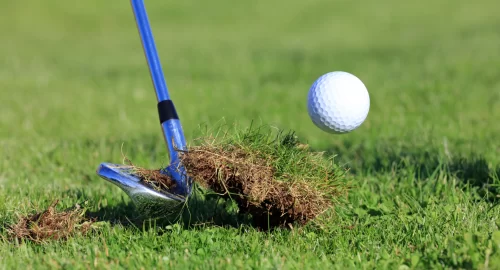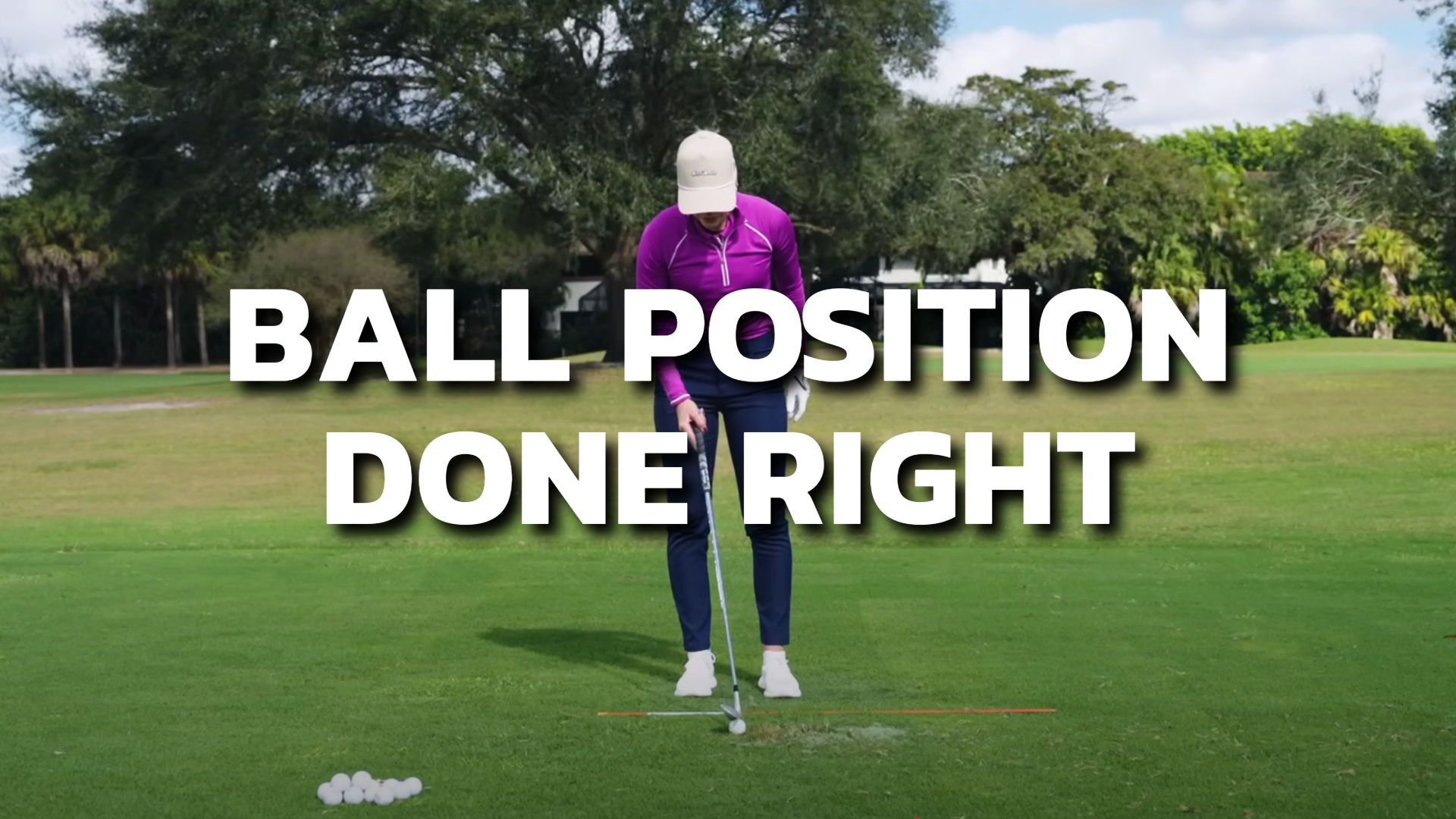
Most golfers think of ball position as something fixed. You place the ball at the setup and leave it there. However, there’s a little catch to that mentality.
While the ball itself doesn’t move, its position relative to your body changes throughout the swing. Understanding and using this dynamic movement is key to better contact, compression, and power.
The Core Idea: Ball Position Moves Relative to Your Center
What “Ball Position” Actually Means
It’s true that ball position refers to the spot of the golf ball on the ground, but as your body shifts during the swing, its position relative to your center of mass changes. As you transition from backswing to downswing, your weight moves forward, effectively shifting the ball back in relation to your stance.
This is what we mean by “the ball position actually moves.”
Why That Shift Is Good
This forward shift helps create a downward strike with irons, leading to crisp contact, compression, and stronger ball flight. It also generates more power by loading weight into the lead side, then releasing it into impact.
How to Do Master Ball Position: Transition & Drill
The Transition
The most important moment is moving from backswing into downswing. As the backswing is finishing, you should already be starting to shift weight into the front leg. This dual action — finishing the backswing while moving forward — is what produces that dynamic ball position change.
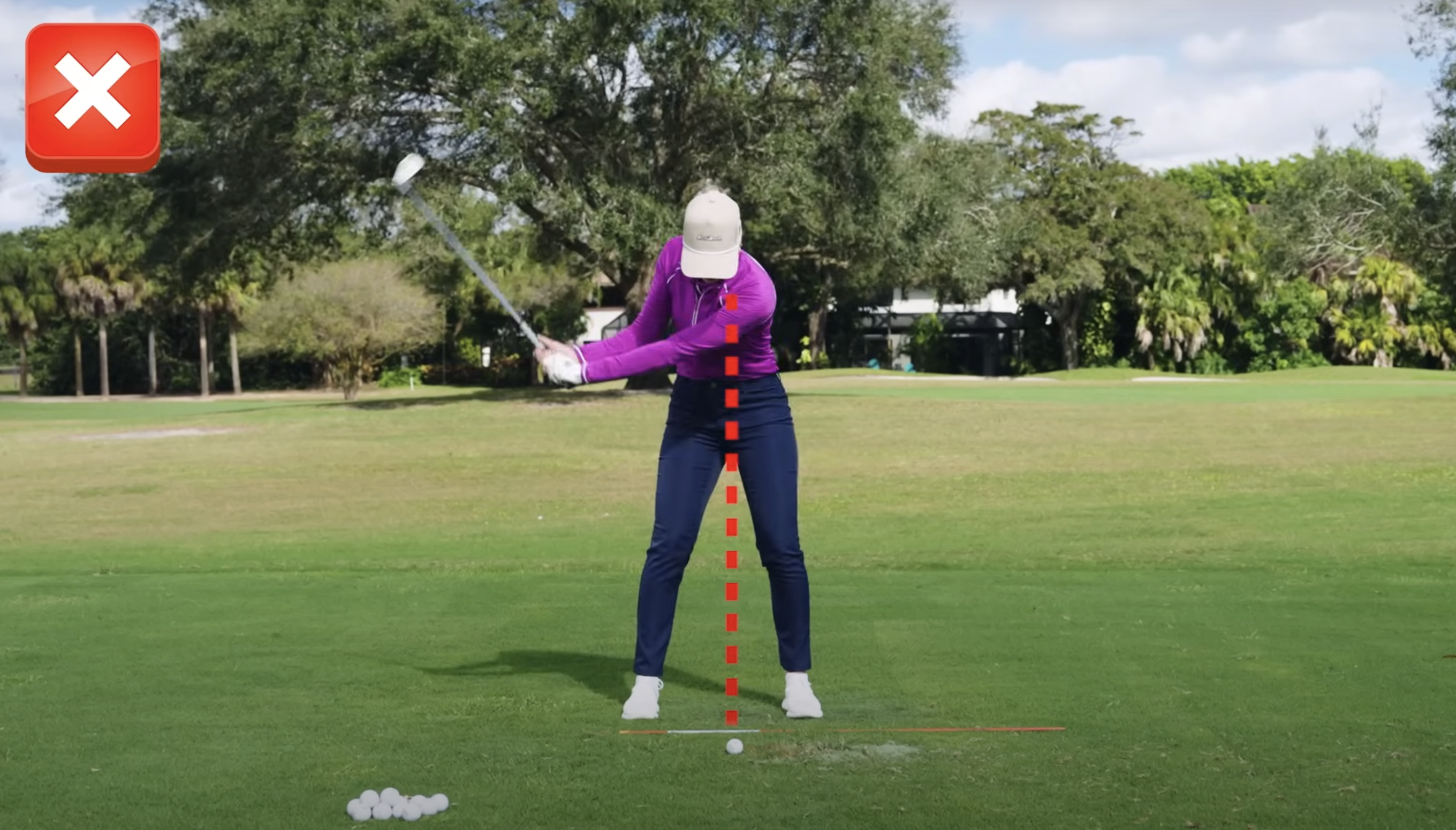
The Step-In Drill
- Start with feet slightly closer together, positioned just behind the ball.
- Place the club slightly ahead of the ball to build momentum.
- Begin the backswing, and as you reach halfway back, step into the ball with the lead leg while continuing the swing.
This stepping motion forces your center to move forward, shifting ball position relative to your body and creating solid, compressed strikes. Repeating and exaggerating the drill helps ingrain the feel.
Applying to All Clubs, Including Driver
This concept applies to every club in the bag. While a driver setup naturally positions the ball forward near the lead heel, weight shift still matters. Moving into the lead side as you swing helps produce more powerful drives, just as it improves contact with irons and wedges.
For more on how to adjust your ball position for every club in the bag, be sure to check out this article.
The Right Golf Swing Movement for Better Ball Position
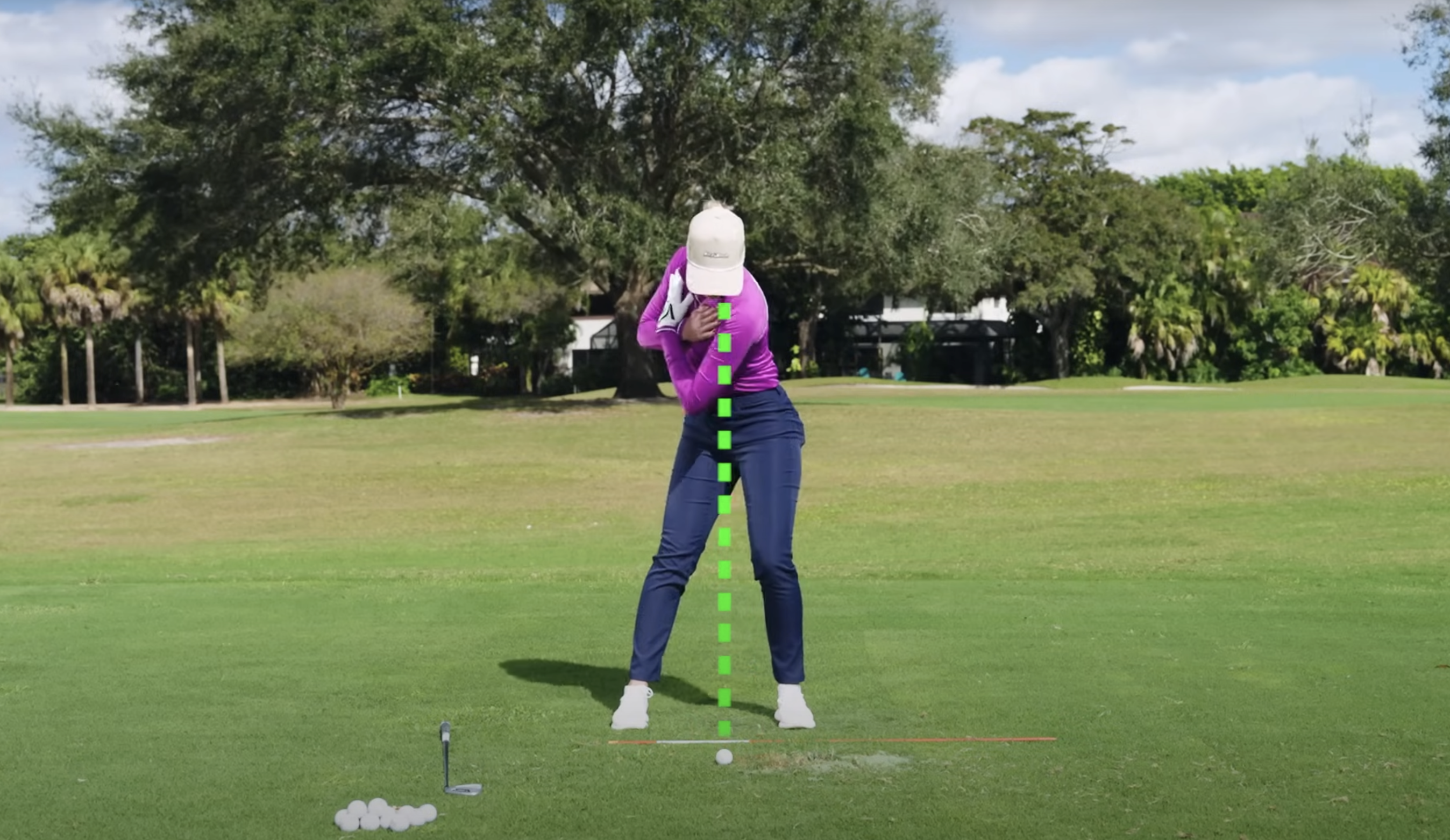
If your center doesn’t shift forward, you’ll often “hang back.” This can leading to weak contact, poor compression, and fat or thin shots. Without that dynamic movement, the low point of the swing arc becomes inconsistent, making solid ball-striking much harder.
Ball position isn’t as static as many golfers think. By learning how it shifts relative to your center and training with drills like the step-in, you can strike the ball more cleanly, add compression, and build consistency across your game.
